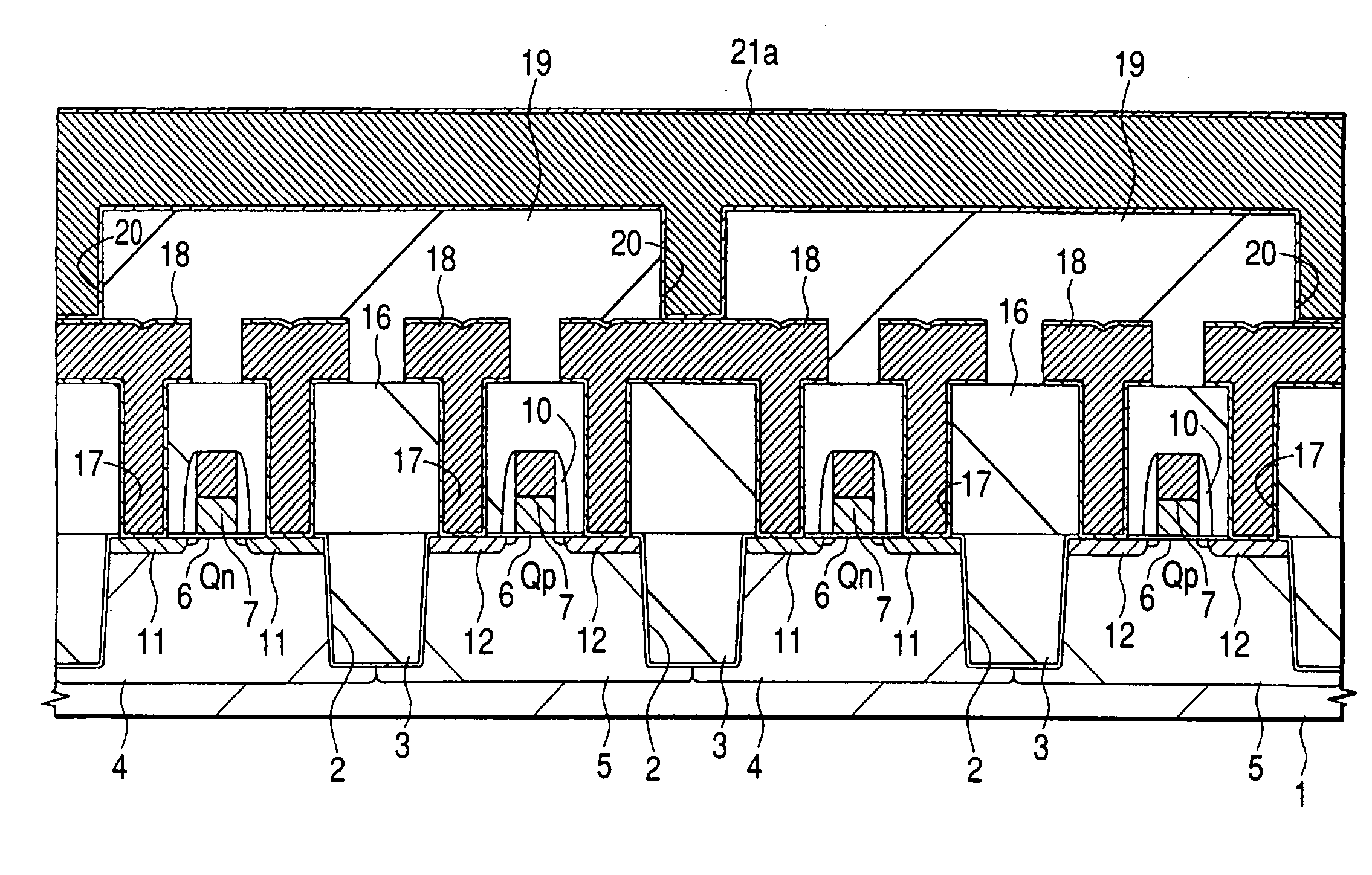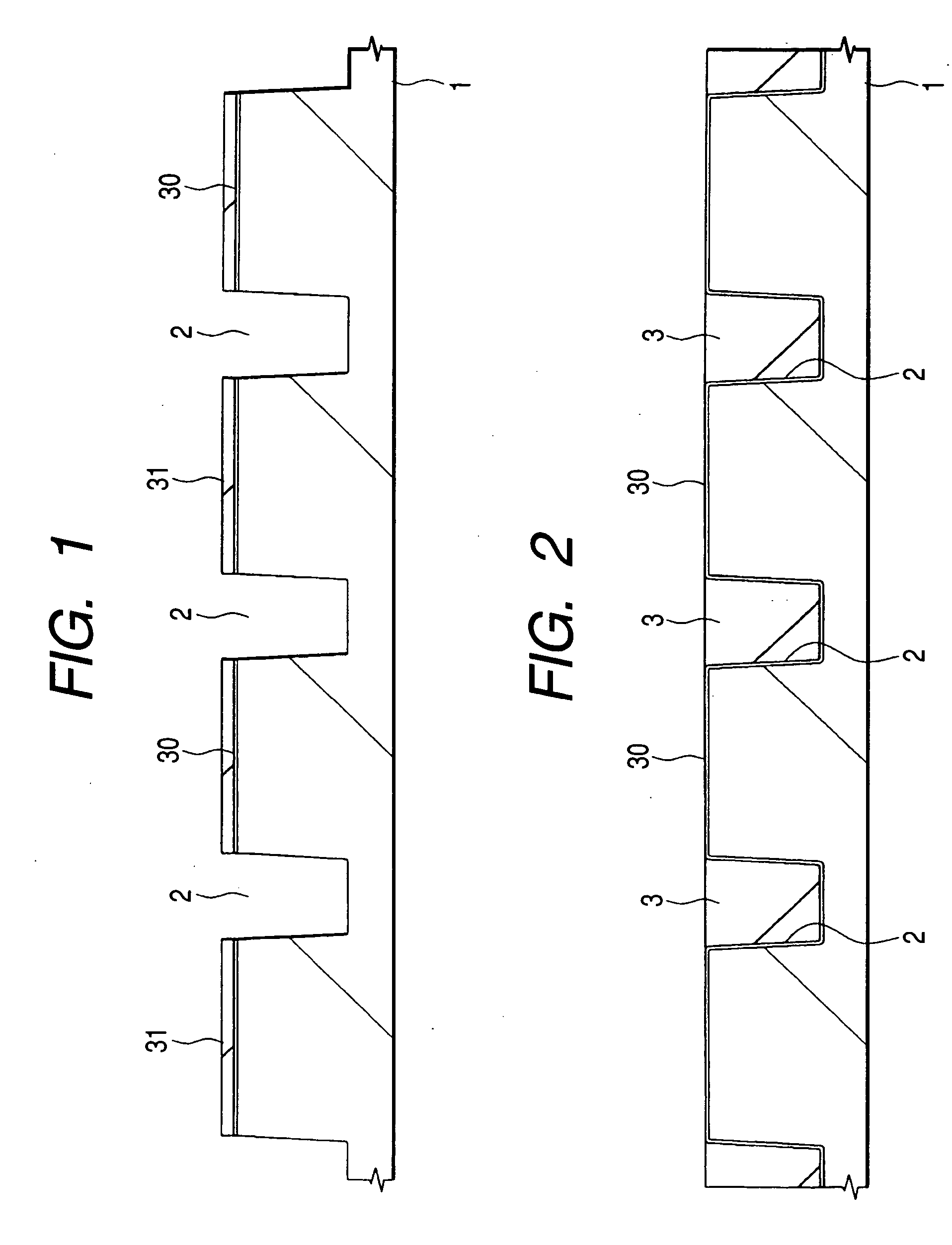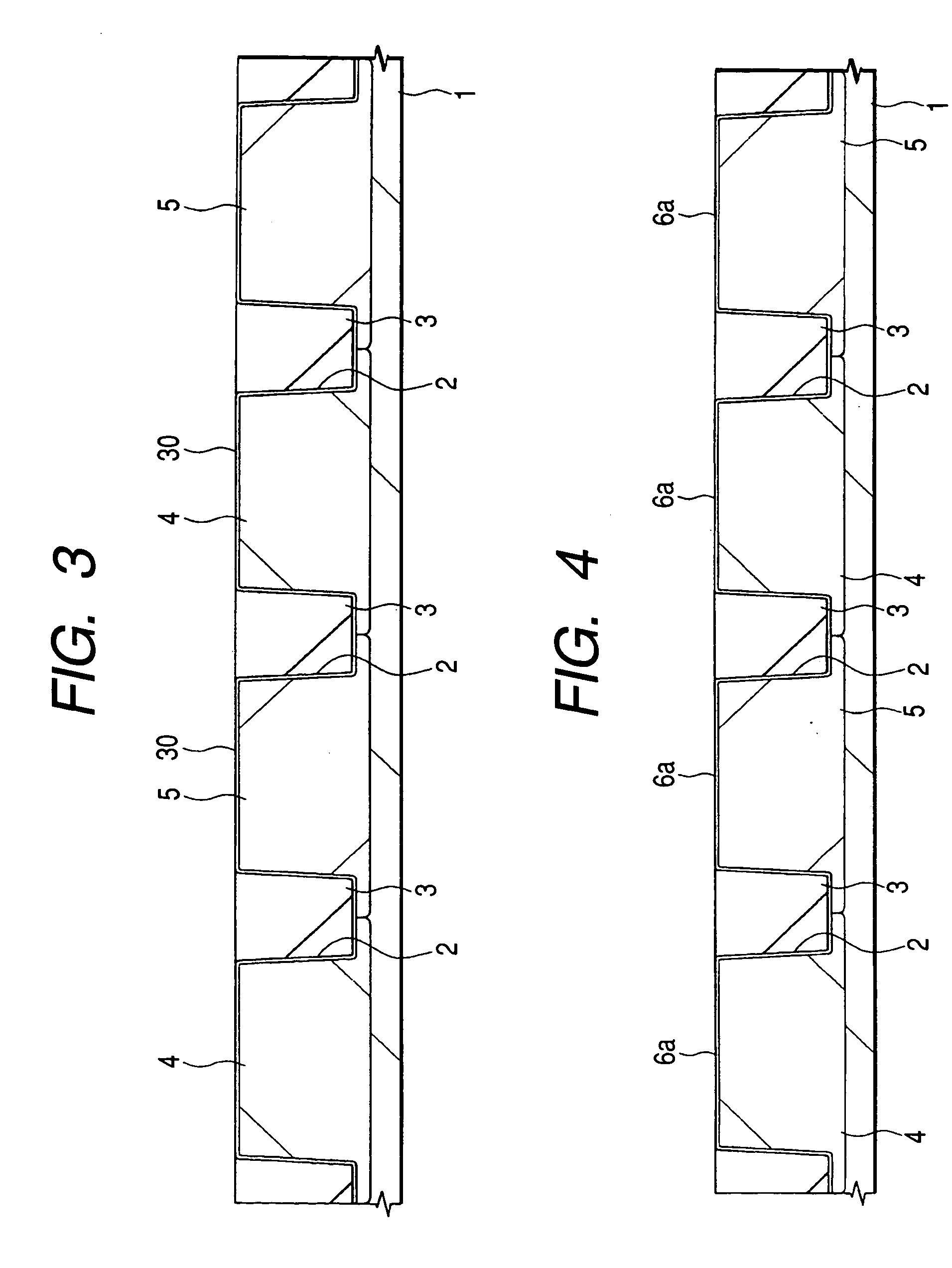Method of manufacturing a semiconductor integrated circuit device
a semiconductor and integrated circuit technology, applied in the direction of semiconductor devices, electrical equipment, transistors, etc., can solve the problems of reducing the carrier mobility of misfet, the dielectric constant of silicon oxynitride films is difficult to increase, and the drain current (ids) is about 10%
- Summary
- Abstract
- Description
- Claims
- Application Information
AI Technical Summary
Benefits of technology
Problems solved by technology
Method used
Image
Examples
embodiment 1
[0066] The method of manufacturing a CMOS-LSI according to this embodiment will be described in the order of steps with reference to FIGS. 1 to 15.
[0067] First, as shown in FIG. 1, element separation grooves 2 are formed in the main surface of a semiconductor substrate (to be referred to as “substrate” hereinafter) made from p type monocrystal silicon having a resistivity of about 1 to 10 Ωcm. To form the element separation grooves 2, the substrate 1 is thermally oxidized to form a silicon oxide film 30 having a thickness of about 10 nm on the surface, a silicon nitride film 31 having a thickness of about 100 nm deposited on the top of the silicon oxide film 30 by CVD is patterned, and then the substrate 1 is etched by using this silicon nitride film 31 as a mask.
[0068] Thereafter, as shown in FIG. 2, a silicon oxide film 3 having a thickness of about 500 nm is deposited on the substrate 1 by CVD, the silicon oxide film 3 around the element separation grooves 2 is removed by a che...
embodiment 2
[0094] The semiconductor integrated circuit device of this embodiment is a DRAM-logic hybrid LSI having a DRAM (Dynamic Random Access Memory) and a logic circuit formed on the same semiconductor substrate. The method of manufacturing this hybrid LSI will be described in the order of steps with reference to FIGS. 16 to 26. The left and center areas in these figures are a DRAM memory cell forming area (to be referred to as “DRAM forming area” hereinafter) and the right area is a logic circuit forming area.
[0095] As shown in FIG. 16, element separation grooves 2, p type wells 4 and an n type well 5 are first formed on the main surface of a substrate 1 in the same manner as in the above Embodiment 1, a silicon oxide film 6a is formed on the surfaces of the p type wells 4 and the n type well 5, nitrogen is introduced into the silicon oxide film 6a by using both of the above oxynitridation treatment and nitrogen plasma treatment to form a silicon oxynitride gate insulating film 6 having ...
embodiment 3
[0114] The method of forming a gate insulating film according to this embodiment will be described with reference to FIGS. 27 to 29.
[0115] As shown in FIG. 27, element separation grooves 2 , p type wells 4 and n type wells 5 are formed on the main surface of the substrate 1, and the substrate 1 is wet oxidized to form a silicon oxide film 6a having a thickness of 1 to 1.5 nm on the surfaces of the p type wells 4 and the n type wells 5 in the same manner as in the above Embodiment 1.
[0116] As shown in FIG. 28, the substrate 1 is heated in an atmosphere containing 5% of an NO gas at 900 to 1,100° C. Thereby, nitrogen is introduced into the silicon oxide film 6a formed on the surface of the substrate 1 and a silicon oxynitride film 6b in which nitrogen segregates near the interface with the substrate 1 is formed as in the above Embodiment 1. Conditions for carrying out the above heat treatment (oxynitridation treatment) must be set to ensure that the concentration of nitrogen near th...
PUM
| Property | Measurement | Unit |
|---|---|---|
| thickness | aaaaa | aaaaa |
| temperature | aaaaa | aaaaa |
| thickness | aaaaa | aaaaa |
Abstract
Description
Claims
Application Information
 Login to View More
Login to View More - R&D
- Intellectual Property
- Life Sciences
- Materials
- Tech Scout
- Unparalleled Data Quality
- Higher Quality Content
- 60% Fewer Hallucinations
Browse by: Latest US Patents, China's latest patents, Technical Efficacy Thesaurus, Application Domain, Technology Topic, Popular Technical Reports.
© 2025 PatSnap. All rights reserved.Legal|Privacy policy|Modern Slavery Act Transparency Statement|Sitemap|About US| Contact US: help@patsnap.com



